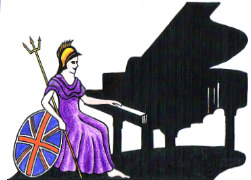Teachers, Accompanists and Piano Entertainers in the UK

UK Piano Page

Browse Locations England » West Midlands » Castle Bromwich
St. Francis Hall
Baccabox Lane
Birmingham, West Midlands B47 5DD
England
Buying the right piano is often a difficult task,
121-125 Royal Avenue
Belfast, County Antrim BT1 1FF
Northern Ireland
The Belfast music scene has been quietly turning
Donaghadee, County Down BT21 0NL
Northern Ireland
We have a high quality range of New andAs-New
1a Vale Road
Crosby, Merseyside
England
Beautiful Pianos for Beautiful Music At the Piano
94 Kingston Road
Wimbledon
Merton, London SW19 1LA
England
Music Festival for performers and guests Our 10th
18-06-2022 12:30PM
The Morecambe Bay Piano Group was set up to extend
11-12-2021 01:00PM
The Morecambe Bay Piano Group was set up to extend
08-01-2022 01:00PM
The Morecambe Bay Piano Group was set up to extend
12-02-2022 01:00PM